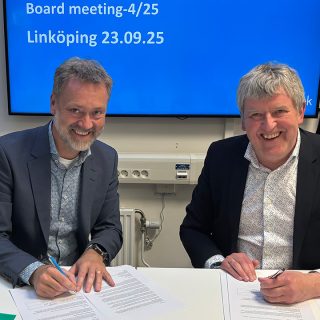It is a well-known fact that motivation is extremely important in learning. As such, it is worth knowing about the prevailing theory of motivation pioneered by Deci and Ryan, called self-determination theory (1985). A common misconception is that this theory divides motivation into two opposing types: intrinsic and extrinsic. In reality, self-determination theory sees motivation as a spectrum between amotivation (total lack of motivation) and intrinsic motivation, with extrinsic motivation in between. This is because the theory uses the separation of the action from the outcome as the determining factor of the motivation type.
Let’s illustrate this with an example. A learner who sees no connection between studying (action) and their desired goal (outcome) is understandably unmotivated to study. Still, if the learner wants to fill the expectations of their teacher and peers, extrinsic motivation will help them to put in the minimal effort required. However, if the learner has been able to identify the connection between studying and their desired goal and has the freedom to shape their studies to match the goal as closely as possible, their persistence, engagement and task satisfaction will be significantly higher (Taylor et al., 2014).

Discovering best practices
So how can this information be used to nourish learner motivation? This is what Laitinen investigated in his thesis “Measuring the Motivations of Adult Learners to Engage in MOOCs, A Finnish Case Study”.
The thesis was done in cooperation with FITech (The Finnish Institute of Technology), which is a network consisting of nine universities offering education in technology in Finland. The founding mission of FITech is to increase the co-operation of Finnish technical universities. The goal is to guide experts to growth sectors in Finland and respond to competence needs arising in the field of technology. Concrete actions to achieve this goal include opening the study offering of these universities to a wider group of learners.
FITech surveyed all the learners who had taken part in courses in fall 2023. The survey received 330 responses, with the average age of a responder being 42 years. The recommendations and best practices presented below are a combined result of the analysis done on the responses as well as a thorough literature review.
Recommendation 1: Help learners find their goals
Once motivation has been clearly defined, the ways to improve it become quite obvious. Any actions supporting learners in defining their desired outcomes and aligning their actions with the outcome will increase motivation.
Best practice already used in many top universities is to ask the learners why they decided to enrol in the course. This practice however often falls short of its potential, as the activity is often forgotten after the initial session. In his thesis, Laitinen found indications that the goals set by the learners only cover around 60% of the designed course content.
Recommendation 2: Support autonomous actions
Another recommendation is to give learners the ability to shape their study assignments according to their interest, whether it be integrating learners’ own interests to the assignments or giving multiple possible study paths.
One of the main findings of the thesis was that learners motivated by the discovery of new things were 42% more likely to successfully complete the course when compared to those with career related goals.
It was also discovered that at least some of these activities should include other people, as social interaction had a significant positive impact on course completion rates.
Recommendation 3: Enable learner competency
It is possible for the learner to see the connection between an action and a desired outcome, but still feel unmotivated. This happens if the learner feels uncapable of performing the action, for example, if the course has adopted a flipped classroom approach, but the expectations and ways of working have not been clearly established. Empowering learners should be one of the teacher’s key roles, which is why those encountering difficulties in their studies should be supported.
Clear and frequent feedback, open office hours and in-class check ups are good ways to ensure the learners feel capable of dealing with the course requirements.
Conclusion
Hopefully this has been able to motivate you to think about motivation. Supporting learner motivation is crucial in creating an effective and engaging learning environment.
By helping learners find their goals, enhancing their autonomy, and enabling their competency, teachers can significantly impact the learners’ educational experiences and outcomes.
References
Taylor, G., Jungert, T., Mageau, G. A., Schattke, K., Dedic, H., Rosenfield, S., & Koestner, R. (2014). A self-determination theory approach to predicting school achievement over time: The unique role of intrinsic motivation. Contemporary Educational Psychology, 39(4), 342–358. https://doi.org/10.1016/j.cedpsych.2014.08.002.
Vallerand, R. J., Pelletier, L. G., Blais, M. R., Briere, N. M., & Vallieres, E. F. (1992). The academic motivation scale: a measure of intrinsic, extrinsic, and amotivation in education.
Laitinen, P. (2024). Measuring the Motivations of Adult Learners to Engage in MOOCs, A Finnish Case Study. [Master’s thesis, Aalto University School of Business].
Deci, E., & Ryan, R. (1985). Intrinsic motivation and self-determination in human behavior. New York: Plenum Press.



